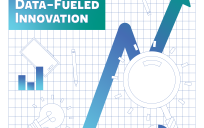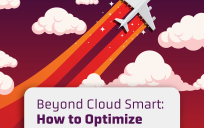This blog post is an excerpt from GovLoop’s research brief, “The New Way to Manage Government Data.”
Government has long prioritized the electronic use of data. The 2012 Presidential Memorandum – Managing Government Records called for a digital transition in government. Some of the targets included having federal agencies manage all permanent electronic records in electronic format by 2019. Additionally, the memorandum called for research on the use of automated technologies to “reduce the burden of records management responsibilities.”
Without virtualized platforms like cloud to manage data, agencies can struggle processing data and navigating their applications and solutions.
Despite the clear benefits of cloud and virtualization, as well as the provisions from the memorandum, many public-sector organizations have yet to apply virtualization to their data management and storage solutions. This is because government tends to manage data in silos. This means data lives in multiple locations and multiple formats, making it more difficult to sort through. While many federal agencies are slowly making their way to better data integration – advanced stages of data management – many are still struggling with standardization.
Data integration means agencies are able to seamlessly connect data sources while capturing the most important information. In contrast, standardization means an agency is just beginning to define its data and how to use it through policies and frameworks. A recent GAO report noted that “agencies still face challenges related to systems integration issues, lack of resources and evolving and complex reporting requirements.”
Additionally, while cloud adoption has increased exponentially over the years, cloud has yet to be perfected in government. Using multiple cloud vendors and platforms without fully understanding their services and provisions is still a common mistake in government. Often, agencies can fall into the trap of assuming that all cloud providers are the same, which results in using solutions they don’t necessarily know how to implement properly.
That misuse can seriously complicate the data management process. Although every cloud solution offers virtual machines and different types of raw storage, there are differences in feature details, billing models and higher-level applications and network services to consider.
So how can federal agencies navigate the challenges of mounting data volumes, lack of virtualization and complex infrastructures? The answer lies in cloud data management.
Cloud data management is the ability to manage and protect data wherever it lives. Whether data was created on-premises or in the cloud, users need a flexible platform to capture, protect, migrate and recover. A single platform for on-premises and in-cloud workloads makes the data portable and recoverable whenever needed.
Users often search for these features when looking for data management solutions: speed, manageability, search, recovery and cost effectiveness. Cloud data management can help better address all of these areas.
- Speed: In a digital world, the longer it takes to protect data, the longer it takes to physically recover that same data. Cloud management must be speedy in both protection and recovery capabilities, as these are paramount to operations.
- Manageability: When data is easier to manage, you can simplify operations and help staffs make fewer mistakes. Automation and virtualization in the cloud helps agencies achieve both these objectives.
- Search: Agencies often have a number of data repositories but it’s critical to be able to easily search and find data needed to perform certain tasks – without having to dig around for hours. Cloud data management and storage enables speedy and accurate search capabilities.
- Recovery: With the rise of cyberattacks, data breaches are almost inevitable. Having a backup to agency data is imperative. With recovery in the cloud, agencies ensure the integrity of data even in the event of a national crisis or breach.
- Cost effectiveness: Often, agency leaders don’t realize how much they are spending just to maintain legacy infrastructure. Migrating to a single cloud platform can save costs in the short term and long term.
A single platform, like Rubrik’s, manages all the data, simplifying infrastructure, manageability and processes. With teleworking and remote offices on the rise in government, Rubrik recently released a new cloud data management product in its suite called Edge. This is a software appliance that extends data protection and management to virtual and physical environments in remote and branch offices. Agencies can deploy products like Rubrik Edge at remote locations to back up locally, replicate to a central data center and archive to the cloud with an easy-to-use interface.
Ultimately, using cloud data management can help government agencies better manage their data with speed and quick recovery and do so in a secure manner. It can also help staffs easily manage data and storage needs to help them deliver better services, whether internally or to citizens.






Leave a Reply
You must be logged in to post a comment.